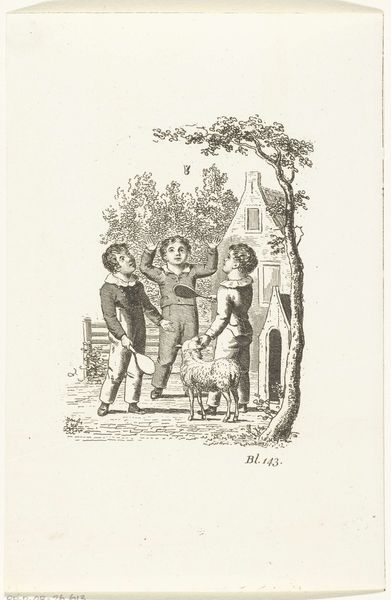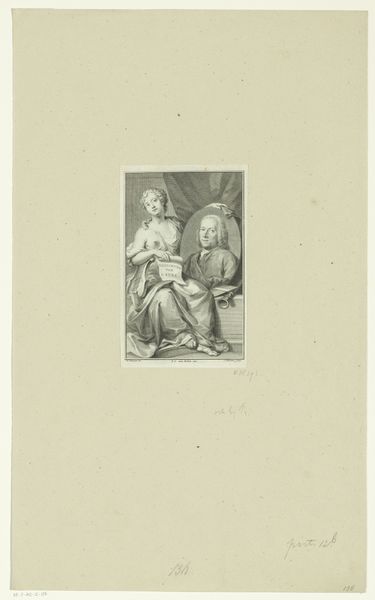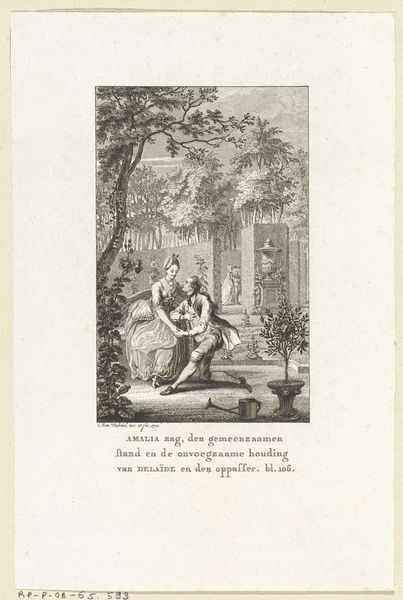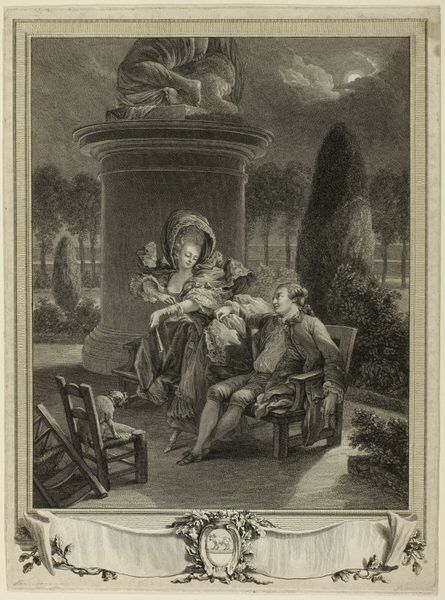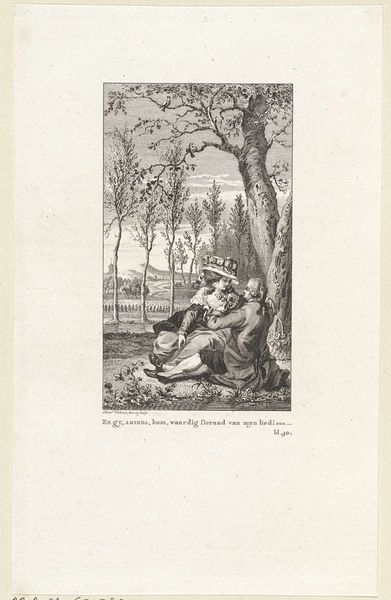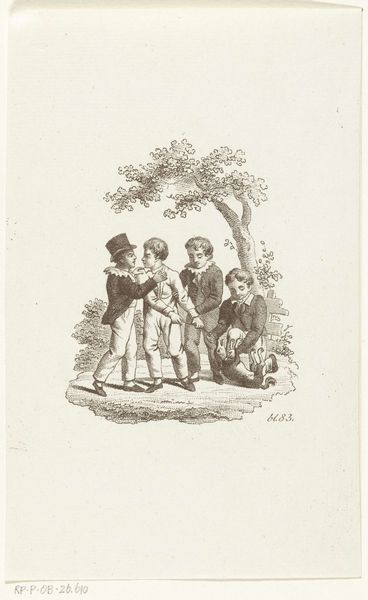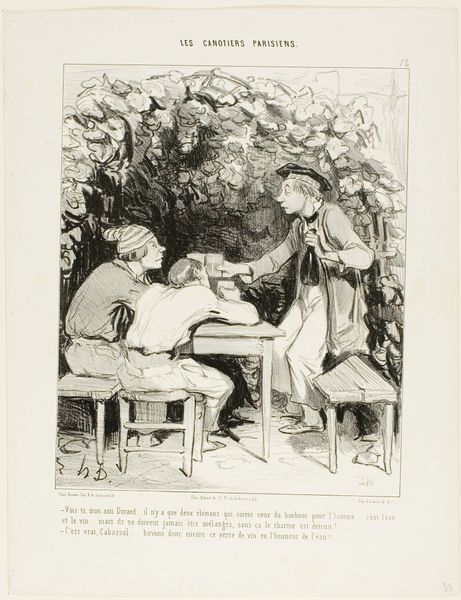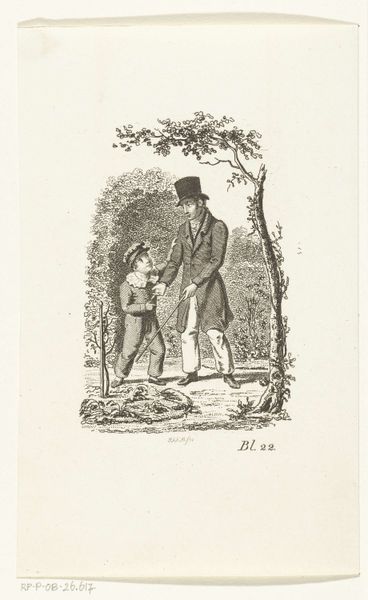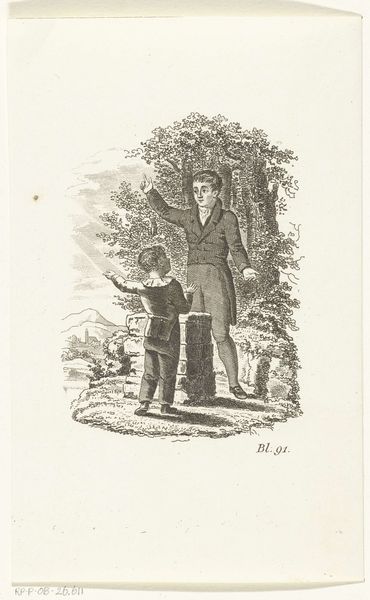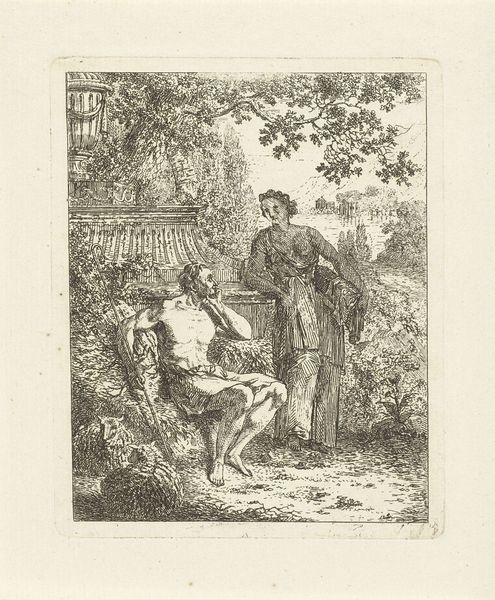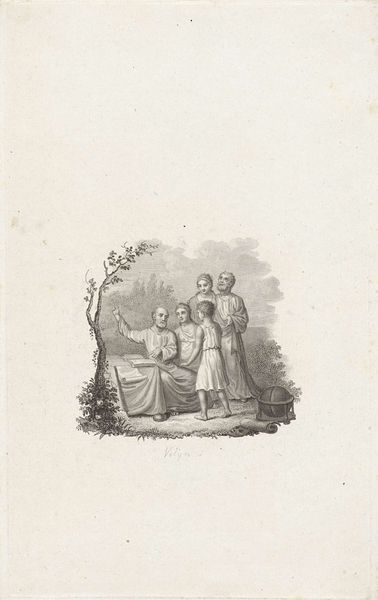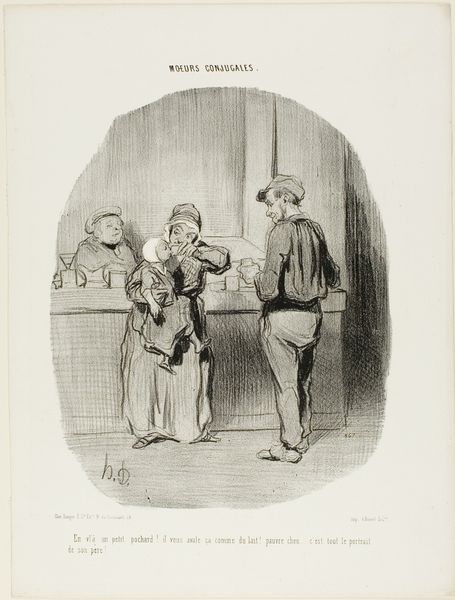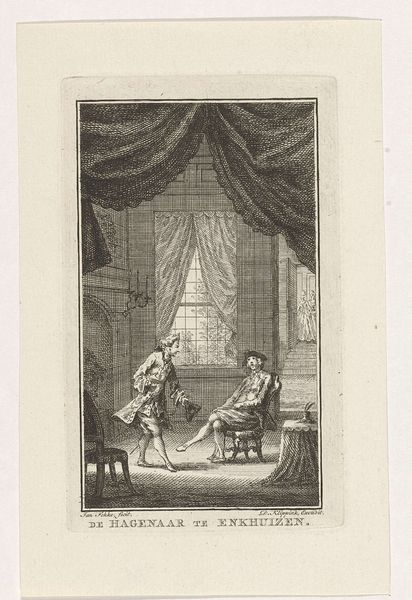
Vader met twee jongens in zijn armen en moeder, zittend in tuin bij twee honden 1807 - 1855
0:00
0:00
drawing, paper, ink
#
portrait
#
drawing
#
narrative-art
#
dog
#
figuration
#
paper
#
ink
#
romanticism
#
genre-painting
Dimensions: height 183 mm, width 114 mm
Copyright: Rijks Museum: Open Domain
Curator: Here we have an ink drawing on paper from Johannes Alexander Rudolf Best, dating between 1807 and 1855. Its title translates to "Father with two boys in his arms and mother, sitting in garden by two dogs." What are your immediate impressions? Editor: Well, the most striking thing is the almost saccharine domesticity. It presents a picture of idyllic family life, with very clean lines and an incredibly still, posed arrangement. Almost too perfect. Curator: It is fascinating how the artist uses the conventions of Romanticism to depict bourgeois domesticity. The positioning of the father as the central figure, cradling the boys, speaks to notions of paternal authority and emotional connection. The mother, while present, occupies a more passive role. We must consider how such a depiction reinforces prevailing gender norms of the time. Editor: Indeed. The formal composition also interests me. Note how the artist has grouped the figures centrally, framed by the trees and architectural detail of the home behind. It creates a sense of enclosure and self-containment, further reinforcing the idea of the family as a distinct, protected unit. I wonder what semiotic readings one might have for the repeated appearance of canines in similar period works... Curator: Through an intersectional lens, one can analyze the visual representation of class in this piece. The well-dressed family, the manicured garden, and even the presence of dogs as pets, signals a certain level of privilege and economic standing. This is not simply a portrayal of familial love, but also a subtle display of social status and bourgeois ideals. Editor: Absolutely. The execution of the work seems rather skillful in modulating line and tone with such restricted palette, drawing one's eyes towards the interiority of the image despite its simple narrative scene. Do you find it to have succeeded in expressing any particular emotional nuance through those aesthetic decisions? Curator: The drawing underscores the socio-political constructs embedded within the family unit during the early 19th century. Its idealized vision serves to naturalize power structures and gender roles. It’s also an intimate depiction, offering glimpses into personal lives and aspirations during a pivotal era. Editor: Indeed, and I find my attention shifting again toward the dogs – creatures bound to both labor and leisure in that period. Each compositional choice tells an intriguing piece of a story, with technique being as equally a factor of import as content matter itself. Curator: A pertinent observation to keep with us when reflecting on similar drawings of that era.
Comments
No comments
Be the first to comment and join the conversation on the ultimate creative platform.
